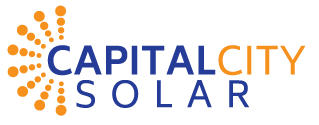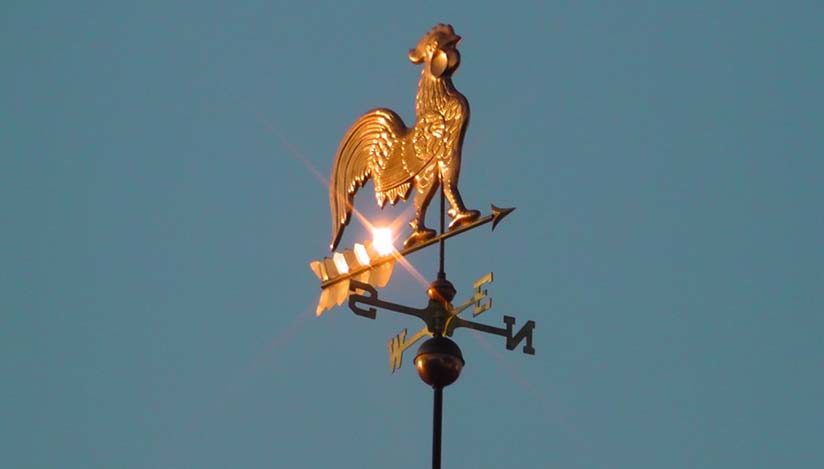What Direction Should Your Solar Panels Face to Save You Money?
You likely don’t think about which way is the ‘right way’ to face your solar panels—the direction which the flat surface of each panel should face—but solar power system installers certainly do. The energy production of a solar panel depends entirely on the amount of sun it receives. This is why solar panel systems perform better in sunnier areas, and homeowners with less shade on their roofs enjoy improved energy production.
Consequently, the direction that a solar panel faces determines how much energy it can produce. For the last few decades, conventional wisdom among solar experts has held that south is the best direction to face solar panels for installations in the Northern Hemisphere.
To understand this rationale, consider the alternatives. If we were to face panels to the east, they would collect more light in the morning, but would be in shade towards the latter half of the day. The opposite would be true for panels facing west—less light in the morning, more in the evening.
For someone trying to find a good middle ground, this leaves north and south. For those of us in the Northern Hemisphere, there would be no good reason to face panels to the north, as the sun is always somewhat to the south of us. Panels pointed northward would be a disaster, as they would always be facing away from the sun!
This is why installers have always faced solar panels to the south. However, the tilt varies according to your latitude. The farther norther you are, the steeper your panels are tilted to the south—panels in Seattle will be pitched more steeply than panels in San Diego.
But the universal constant has been that panels installed in the Northern Hemisphere are pointed southward. To give you an idea of the difference this makes, a 5-kW system installed in Roseville with panels facing due south will produce about $1,215 of electricity (8,165 kWh) over the course of a year, while a west-facing system will produce $970 (6,475 kWh) of electricity.
That’s a fairly big difference. All else being equal, pointing your panels due south maximizes your solar power system’s sunlight collection and energy production.
But… what if all things aren’t equal? What if there’s another factor that comes into play? Well, such a thing is happening right now.
With time-of-use pricing coming into effect, many homeowners may benefit by facing their solar panels westward.
As we’ve discussed previously in our blog, PG&E, SMUD, and other electric utilities throughout California are in the process of transitioning to time-of-use pricing. Under time-of-use (TOU) pricing, the rate you are charged for the electricity you use varies depending on when you use it.

All year long, between 9 pm and 9 am, when demand is low, consumers are charged a very low ‘off-peak’ rate of about 8.5 cents per kilowatt-hour (kWh). Starting at 9 am, when most families are out of bed, the energy rate increases by more than 70% to nearly 15 cents per kWh.
In the summertime, there’s an even higher ‘super peak’ rate between 4 and 7 pm, when prices surge to more than 37 cents per kWh—more than 330% higher than the off-peak rate, and 150% higher than the peak rate.
To put this another way, $100 of electricity at the off-peak rate would cost more than $173 during peak hours, and more than $430 during super peak hours,
Southward facing panels produce the most energy around midday—when you aren’t home to take advantage of it. Facing panels to the west generates energy when you need it most.
Facing solar panels to the south is essentially a compromise that maximizes energy production throughout the day, and annually. This is fine if your biggest goal is to maximize how much electricity you produce.
But this doesn’t take into account the extremely high cost of pulling energy from the grid during costly super peak hours.
Looking at how the TOU pricing schedule breaks down, ask yourself: would you rather have your solar panels produce about the same amount of energy all day long? Or would you prefer your system to produce more electricity towards the end of the day, when you and the kids are all at home and using electricity, and electricity happens to be much more expensive? Probably the latter, right?
This is where the traditional approach to facing panels to the south really fails. At about 5 PM, home solar power systems with panels facing due south only produce 15% of their peak production. This means that these homeowners have to rely heavily on utility-sourced energy, right when it’s most expensive under TOU pricing. On the other hand, panels facing to the west—towards the direction the sun sets—produce 55% of their peak output at 5 PM. That’s a big difference.
A system with the panels facing westwards will produce about 14% less electricity year-round, but in the summer will only see overall production reduced by about 1%. But because those panels are producing energy when it’s needed most, studies have shown that homes with westward facing panels reduce the amount of electricity drawn from the grid during periods of peak demand (and cost) by 65%, versus 54% for homes with panels facing to the south. A difference of 11% may not seem like much, but when you’re talking about energy prices that are more than 4 times the base price, it makes a huge difference on your energy bill.
This is why we encourage our customers—as well as homeowners still deciding whether solar power is right for them—to talk to us about their electricity bills and energy consumption habits. For many homeowners, maximizing overall production by aiming their panels south may be the best approach. But for some, especially those with TOU price schedules, it may be best to look to the west.
Obviously, there are often other factors to consider, such as the directions that your roof faces, the presence of trees that cast shade on your roof, and more. Our experts take all of these variables, as well as your priorities and your family’s habits into consideration when designing the ideal solar energy setup.
To learn more about how we work with you to maximize the electricity bill savings you enjoy with a home solar power system, contact Capital City Solar by calling 916-782-3333, or sending us a message using our contact form.

